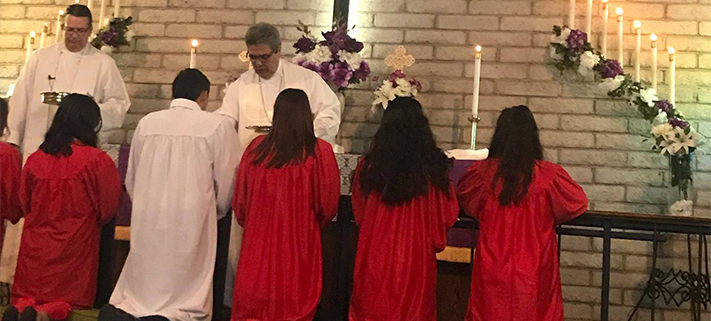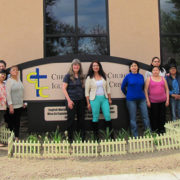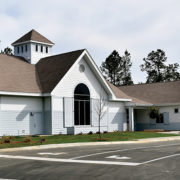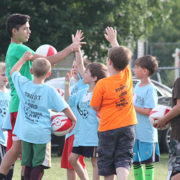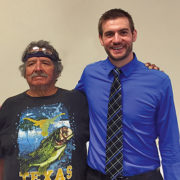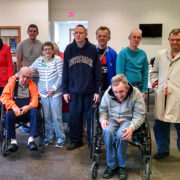Many languages, one family
Families who transition languages in their own home are common today. As immigrants continue to come to the United States, their families will experience language transition. The overwhelming presence of the English language in school and public media leads the youth in those families to learn and use English as soon as they can. That is happening as we speak! Often, homes are bilingual, but the languages used are simple phrases remembered or learned, so that children can communicate with parents.
But what do you do when the family wants to worship together? How do you foster the family atmosphere in the church when the older generation loves to hear the gospel in their heart language, but their children desire to hear it also in their heart language, and that language is different?
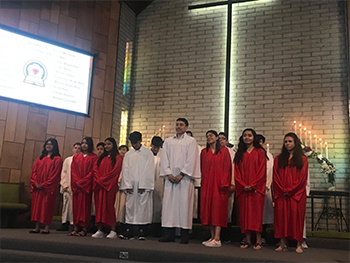
The confirmands
Congregations throughout WELS are wrestling with this reality. Santo Tomas Lutheran Church, in Phoenix, Ariz., is also wrestling with this reality. Santo Tomas was established as St. Thomas in 1964. In 1997, the congregation realized that to reach its community, it needed to work in the Latino culture and use Spanish. Men have been called and have served that family of God faithfully, sharing God’s Word from house to house in Spanish. God has blessed those efforts, and over 120 Hispanics worship weekly at Santo Tomas.
Over 10 years ago, the pastor realized that as he was teaching his catechism class to the adolescents in the congregation, more and more of them didn’t understand his Spanish. He was using terms and vocabulary that were foreign to his students. The students overwhelmingly wanted to hear and learn God’s Word in English. Yet, the ministry at Santo Tomas is in Spanish. Worship, counseling, outreach and fellowship all enjoy the frolicking tones of Spanish. How do you keep the family together?
Santo Tomas determined that God’s Word needs to be clearly understood–so they teach the catechism class in English. One of the current pastors, a native from Cuba whose English is not fluent, has the assistance of his wife, who is fluent. When it is his turn to teach Catechism, he prepares the lesson and his wife teaches and translates into English those words, phrases, and concepts that are not understood in Spanish.
The children learn in their heart language. But what about Confirmation Day? Imagine this: you have a church full of families who speak Spanish and wrestles with their English fluency watching and listening to a group of adolescents who are fluent in English and struggle with their Spanish fluency. Talk about an intercultural nightmare!
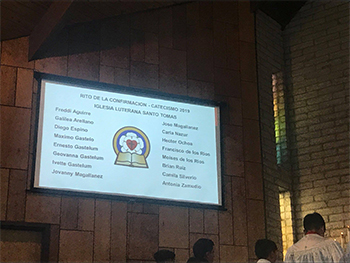
But it doesn’t have to be a nightmare. Their confirmation examination doesn’t have the back-and-forth series of questions that many of us experienced in our confirmation. They elected to have the adolescents prepare short essays that answer the questions pertaining to the chief parts of the Catechism. The adolescents take time to prepare those essays. The pastors use the technical means available to them–projectors and screens–to put up outlines in Spanish of what the children are saying in English. They also hand select a few children, whose Spanish is more fluent, and then work with them so that they can deliver those essays in Spanish.
By the grace of God, on Palm Sunday this year, Santo Tomas had 16 adolescent confirmands. The congregation experienced both languages in worship. Everyone was enriched by the essays on God’s Word. Faces beamed with confidence in their heart language. Above all, God was praised–and God’s family grew in faith.
May God continue to bless the congregations who work with many languages under one roof!
Written by: Rev. Tim Flunker, Hispanic Outreach Consultant for WELS Board for Home Missions
To learn more about Hispanic ministry, visit wels.net/hispanic.
WELS Missions
Learn about the ministry work of WELS Missions.
SUPPORT MISSIONS
Support the ministry work of WELS Missions.
[fbcomments num=”5″]

